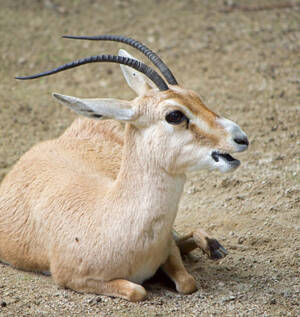
Slender-horned Gazelle (scientific name: Gazella leptoceros) English: Slender-horned Gazelle, French: Gazelle Leptocère, Gazelle à Cornes Fines, Spanish: Gacela de Astas Delgadas, Arabic: Ghazal abiad, Reem, German: Dunengazelle, has 2 subspecies.Slender-horned gazelles live in groups, usually con...
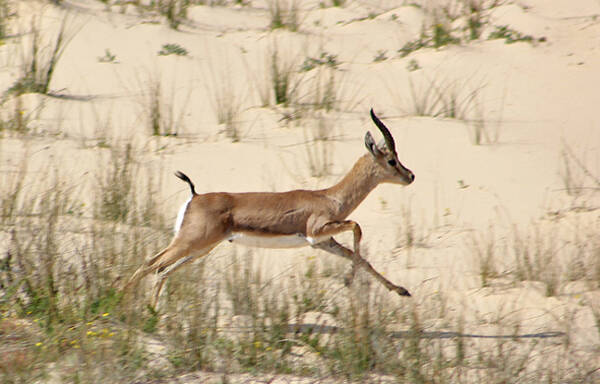
Mountain Gazelle (scientific name: Gazella gazella) is also known as Mountain Gazelle and Idmi in foreign languages. There are 6 subspecies.Mountain gazelles gather in groups, usually in small groups of 3-8, sometimes more. The social structure is that of a male leader who has his own territory and...
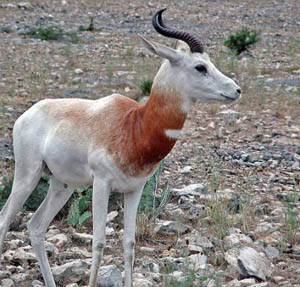
Deer gazelle (scientific name: Gazella dorcas) foreign name Dorcas Gazelle, there are 6 subspecies.Adult male deer gazelles are territorial and will deposit feces within their territory. These feces are deposited in a striking display, with males first making footprints on the ground, then urinating...
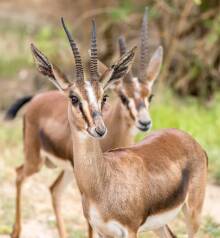
Cuvier's Gazelle (scientific name: Gazella cuvieri) is also known as Cuvier's Gazelle, Mountain Gazelle, Uvier's Gazelle, Cuviers Gazelle, and has no subspecies.Cuvier's gazelles live in small groups of 3-5, sometimes up to 82 in large groups, these groups are composed of females and...

The Yemen Gazelle (scientific name: Gazella bilkis, English name: Queen of Sheba's Gazelle) is a bovine animal originally distributed in the mountains of Yemen. It became extinct between 1985 and 1986.Protect wild animals and eliminate game.Maintaining ecological balance is everyone's respon...
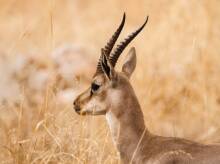
Indian Gazelle (scientific name: Gazella bennetti) is also known as Chinkara and Indian Gazelle in foreign languages. There are 6 subspecies.Indian Gazelle marks its territory on piles of feces. Like other gazelles, adult males are territorial and stay in demarcated areas. They will chase away other...

The Arabian gazelle (Gazella arabica) is an enigmatic gazelle that was hunted to extinction in its Middle Eastern habitat of Saudi Arabia and is known only from a specimen found in 1825 on the Red Sea island of Farasen. The species was listed as extinct on the IUCN Red List of Threatened Species in...
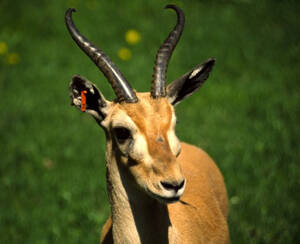
Eritrean Gazelle (scientific name: Eudorcas tilonura) English Heuglin's Gazelle, Eritrean Gazelle, French Gazelle d'Erythrée, German Eritreagazelle, no subspecies.The Eritrean gazelle lives east of the Nile. In the past, the species was considered to be distinct from the Thomson's gazel...

Thomson's gazelle, scientific name: Eudorcas thomsonii (Günther, 1884) foreign name Thomson's gazelle, has 2 subspecies.Thomson's gazelles are good at running and are very alert. They run away at the first sign of movement. They are gregarious and often form the world's most spectac...
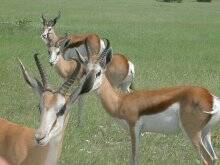
Red-fronted Gazelle (scientific name: Eudorcas rufifrons) is also known as Red-fronted Gazelle in English. It has 5 subspecies.Thomson's gazelle is closely related to the red-fronted gazelle, but is easily distinguished from it by its wide black stripes. The front of the body of the red-fronted...

Mongalla Gazelle (scientific name: Eudorcas albonotata) English: Mongalla Gazelle, French: Gazelle de Mongalla, German: Mogallagazelle, no subspecies, a medium-sized antelope.The Mungara gazelle (Eudorcas albonotata) is a species of gazelle found in floodplains and savannas of South Sudan. It was fi...
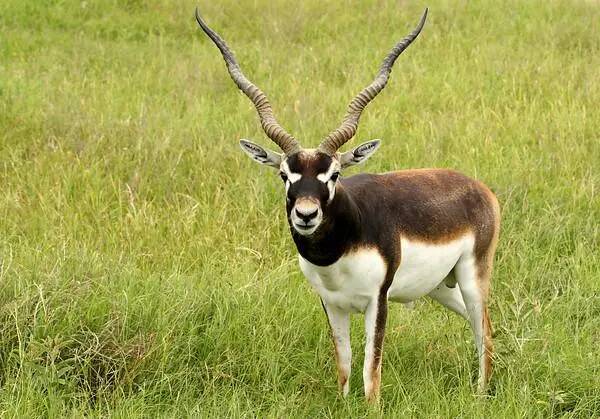
Antilope cervicapra, also known as Blackbuck in English, has two subspecies.Antilope cervicapra is sensitive, alert by nature, good at running and continuous jumping, and is the most agile of the antelopes. It is a gregarious animal, but does not mix with other animals. It lives in open plains and s...
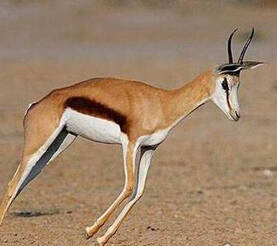
Springbok (scientific name: Antidorcas marsupialis) is called Springbok in foreign language. There are 3 subspecies.Springboks migrate long distances in large groups in the dry season in search of new pastures. They feed on grass and shrub shoots, and will not drink water if there is enough green gr...

Clark's Gazelle (scientific name: Ammodorcas clarkei), also known as Clark's Gazelle in English, has no subspecies and is a medium-sized antelope.The sand antelope is a solitary or social diurnal mammal that can move alone or in small family groups of 3-9 individuals. It feeds in the morning...
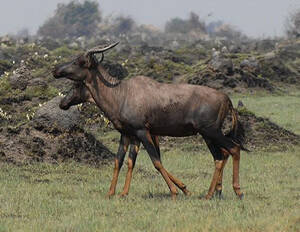
Bangweulu Lake Wildebeest (scientific name: Damaliscus superstes) is also known as Bangweulu Tsessebe in English. There is no subspecies.The Bangweulu Lake Wildebeest was once a subspecies of the Tsessebe. However, based on the differences in skull morphology and fur, it was classified as an indepen...
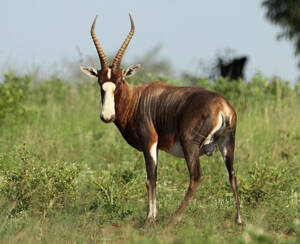
White-striped wildebeest (scientific name: Damaliscus pygargus) is also known as Blesbok in foreign languages. There are two subspecies.Both subspecies of white-striped wildebeest are diurnal animals, mostly grazing in the morning and afternoon, and resting at noon and at night. They are social anim...
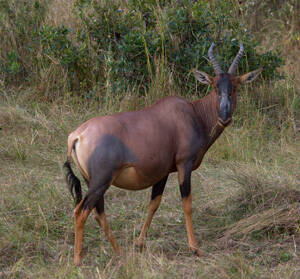
The horned wildebeest (scientific name: Damaliscus lunatus) is also known as Topi, Tiang, and Tsessebe in foreign languages. There are 6 subspecies. The Bangweulu Lake Wildebeest is one of the subspecies of the horned wildebeest. However, based on the differences in skull morphology and fur, it was...
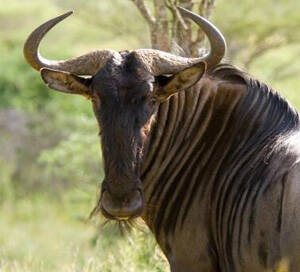
Common Wildebeest (Connochaetes taurinus) has five subspecies.Common Wildebeest can have two or three territorial ranges, each corresponding to a specific season. These generally include dry and wet season territories, as well as a third transitional territory that not all wildebeest use. Transition...
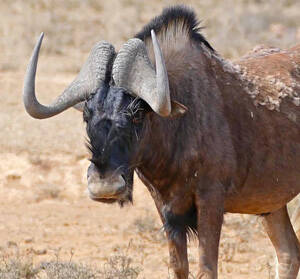
White-tailed wildebeest (scientific name: Connochaetes gnou) is also known as Black Wildebeest and White-tailed Gnu. It has no subspecies.Like spotted wildebeest, white-tailed wildebeest also migrate in groups in the wild. They interact with predators, however they appear to be more aggressive than...
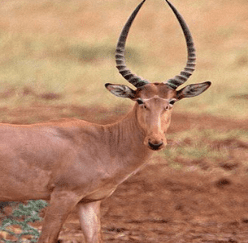
Hirola (scientific name: Beatragus hunteri) is also known as Hirola and Herola in foreign languages. There is no subspecies.Hirola is a species similar to the genus Beatragus and the hartebeest, but they can be distinguished by their horn shape, body shape and fur color. The Henson's wildebeest...